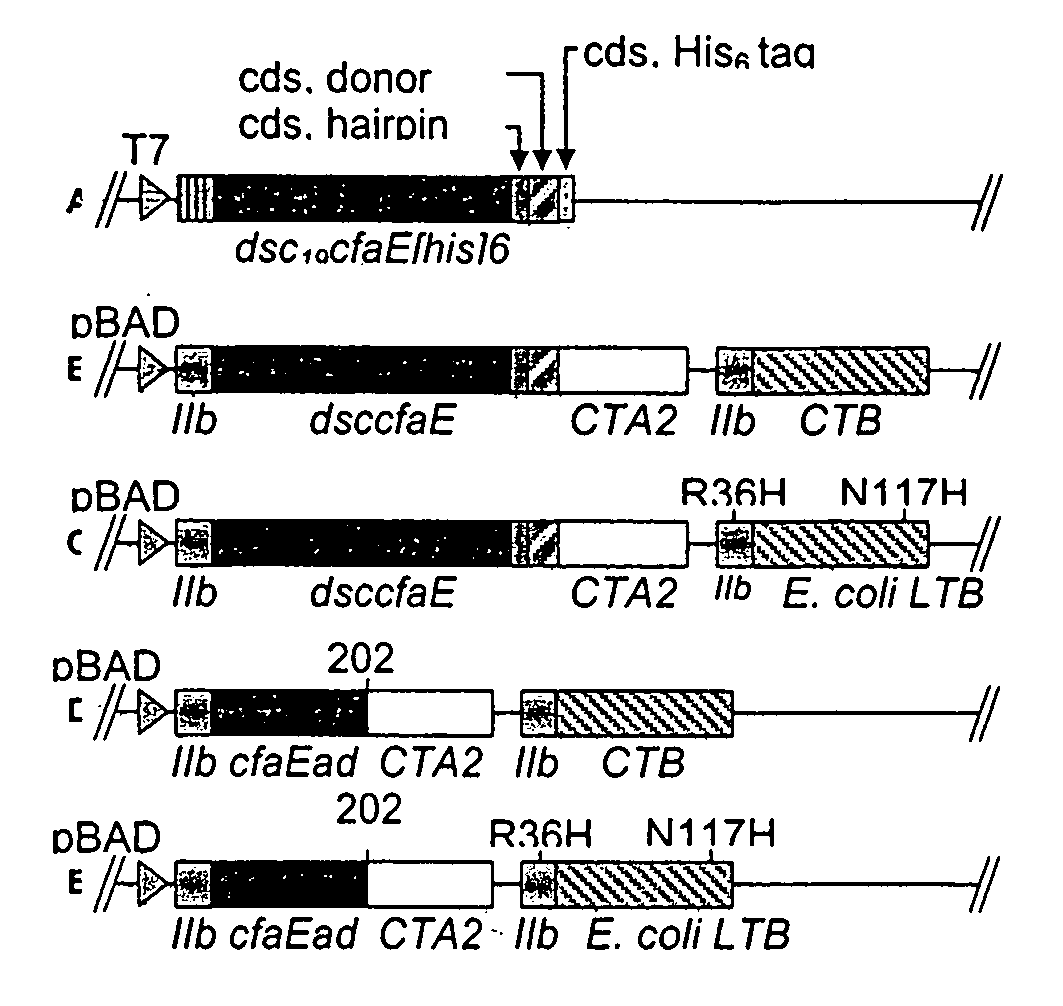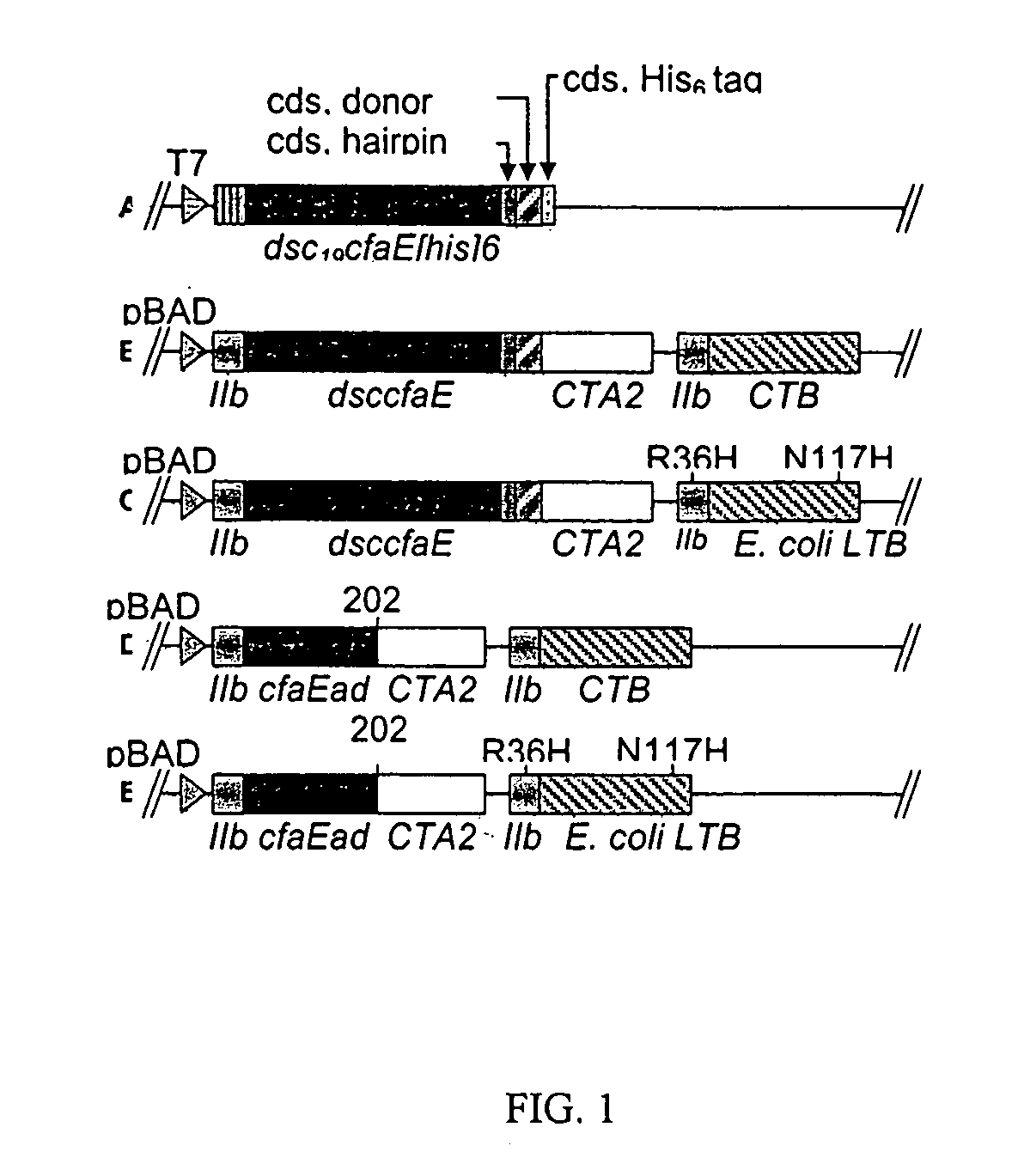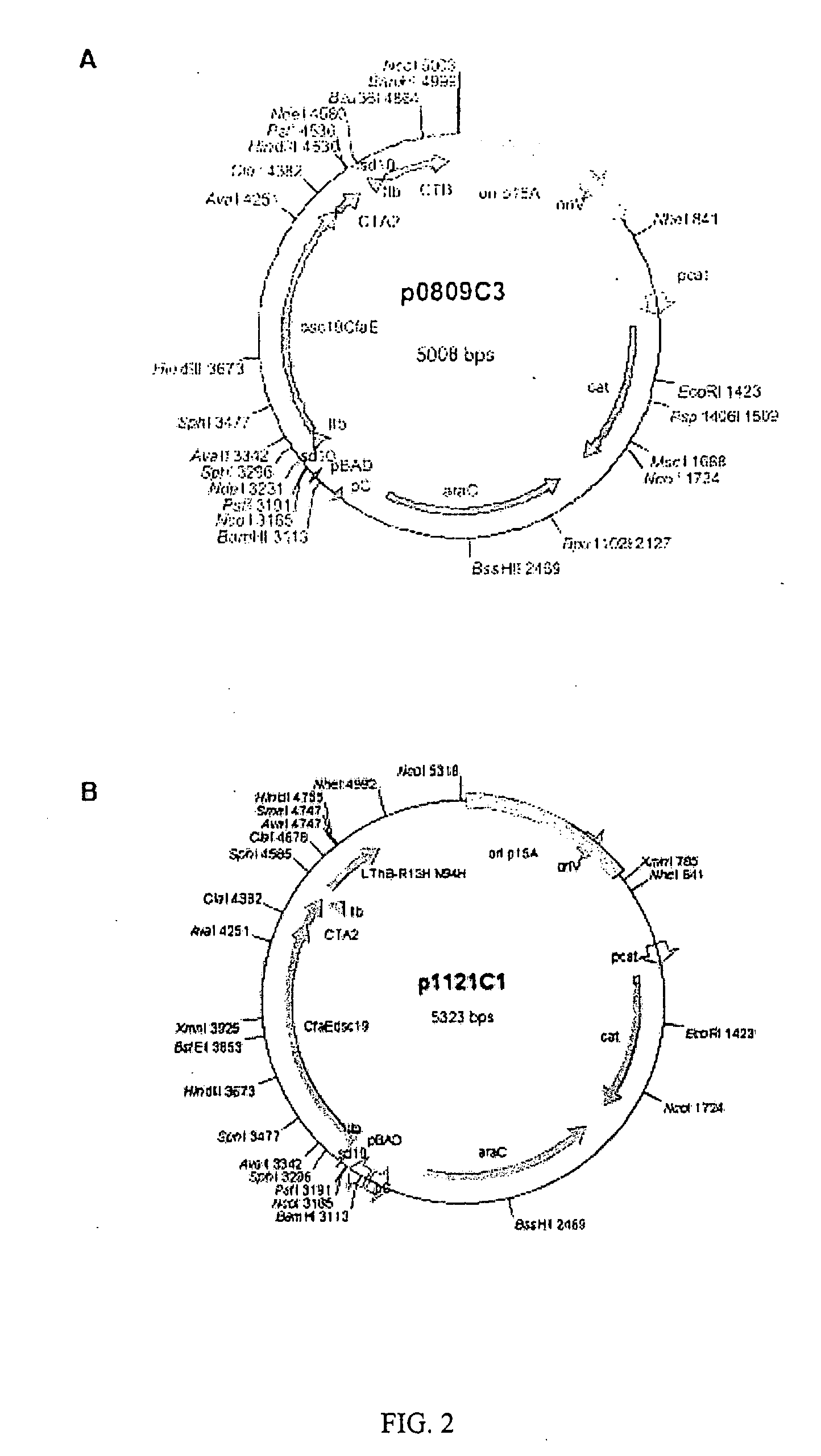Adhesin-enterotoxin chimera based immunongenic composition against enterotoxigenic Escherichia Coli
- Summary
- Abstract
- Description
- Claims
- Application Information
AI Technical Summary
Benefits of technology
Problems solved by technology
Method used
Image
Examples
example 1
Construction of dscCfaE-CT and LT Chimeras
[0043]In order to more fully illustrate the invention, an example of an anti-ETEC composition containing CfaE, the minor subunit of CFA / I, is described. Referring to FIG. 1 (A), a conformationally stable CfaE was constructed by genetically joining a hairpin linker to the 3′ end of the coding sequence of CfaE. The amino acid sequence of the linkers is described by SEQ ID No. 1, 2 and 3. An amino acid donor strand from CfaB, described in SEQ ID No. 4, was then joined at the 3′ end of the linker and finally a hexahistidine tag was joined at the 3′ end of the CfaB donor strand. The construct was then inserted in pET24 plasmids and expressed in E. coli bacteria. The resultant polypeptide, referred to as dscCfaE, was purified by nickel or cobalt affinity and cation-exchange chromatography. The recombinant polypeptide was soluable and stable. Based on gel filtration, the dscCfaE polypeptide existed as a monomer and CD spectroscopic analysis yielded...
example 2
Functional Analysis of Chimera Constructs
[0051]The constructs were functionally examined. The construct in FIG. 1A or FIG. 1B was adsorbed onto 3 μm latex beads and added to human or bovine red cells with the resultant induction of MRHA. This observation provides clear evidence that CfaE is the adhesin in ETEC.
[0052]Crystallographic analysis of dscCfaE at 2.3 Å resolution revealed two elongate domains joined by a loop near its midpoint. Both the N-terminal and C-terminal domains form a β-sheet structure and the donor β-strand from CfaB fills a hydrophobic groove of the C-terminal domain stabilizing the molecule. The adhesin domain is stabilized by two intradomain disulfide bridges. Placement of a stop codon after CfaE residue 199 (refer to FIG. 1C) will yield a stable CfaE adhesion domain (designated CfaE-ad).
[0053]The antigenicity and immunogencity of dscCfaE were tested in animal models. Initially two rabbits were immunized parenterally with a four-dose (0, 28, 56 and 84 days) reg...
example 3
Potential Use of Inventive Chimera in Vaccine Formulations
[0058]The adhesins are likely the most important component for the induction of immunity against diarrheagenic E. coli, although preventing the activity of the heat-labile enterotoxin may also contribute to protection. Because the fimbrial adhesins are inherently unstable and subject to degradation when devoid of their non-covalent linkage to adjacent subunits, the current invention significantly improves the immunogenic potential of adhesin by conferring conformational stability. Additionally, the immunogenic efficacy of conformationally stable adhesin is likely improved significantly by providing the adhesin construct as a chimera with enterotoxin components that have both potent immunogenicity and adjuvant activity.
[0059]The inventive construct is anticipated to be useful as a vaccine component for the induction of an immune response and / or anti-toxic immunity against diarrheagenic E. coli. The method for induction of immu...
PUM
| Property | Measurement | Unit |
|---|---|---|
| Time | aaaaa | aaaaa |
| Mass | aaaaa | aaaaa |
| Mass | aaaaa | aaaaa |
Abstract
Description
Claims
Application Information
 Login to View More
Login to View More - R&D
- Intellectual Property
- Life Sciences
- Materials
- Tech Scout
- Unparalleled Data Quality
- Higher Quality Content
- 60% Fewer Hallucinations
Browse by: Latest US Patents, China's latest patents, Technical Efficacy Thesaurus, Application Domain, Technology Topic, Popular Technical Reports.
© 2025 PatSnap. All rights reserved.Legal|Privacy policy|Modern Slavery Act Transparency Statement|Sitemap|About US| Contact US: help@patsnap.com



